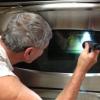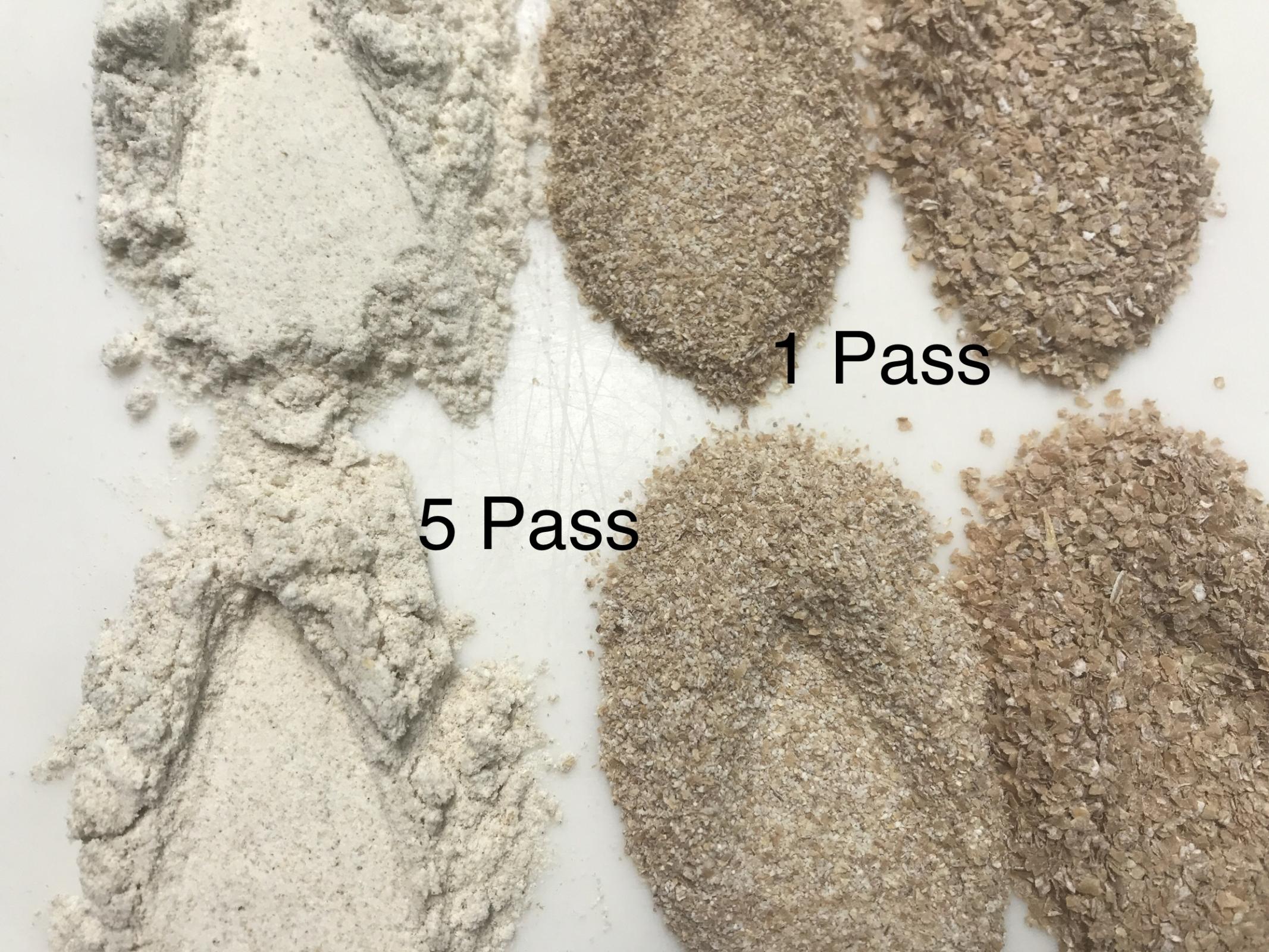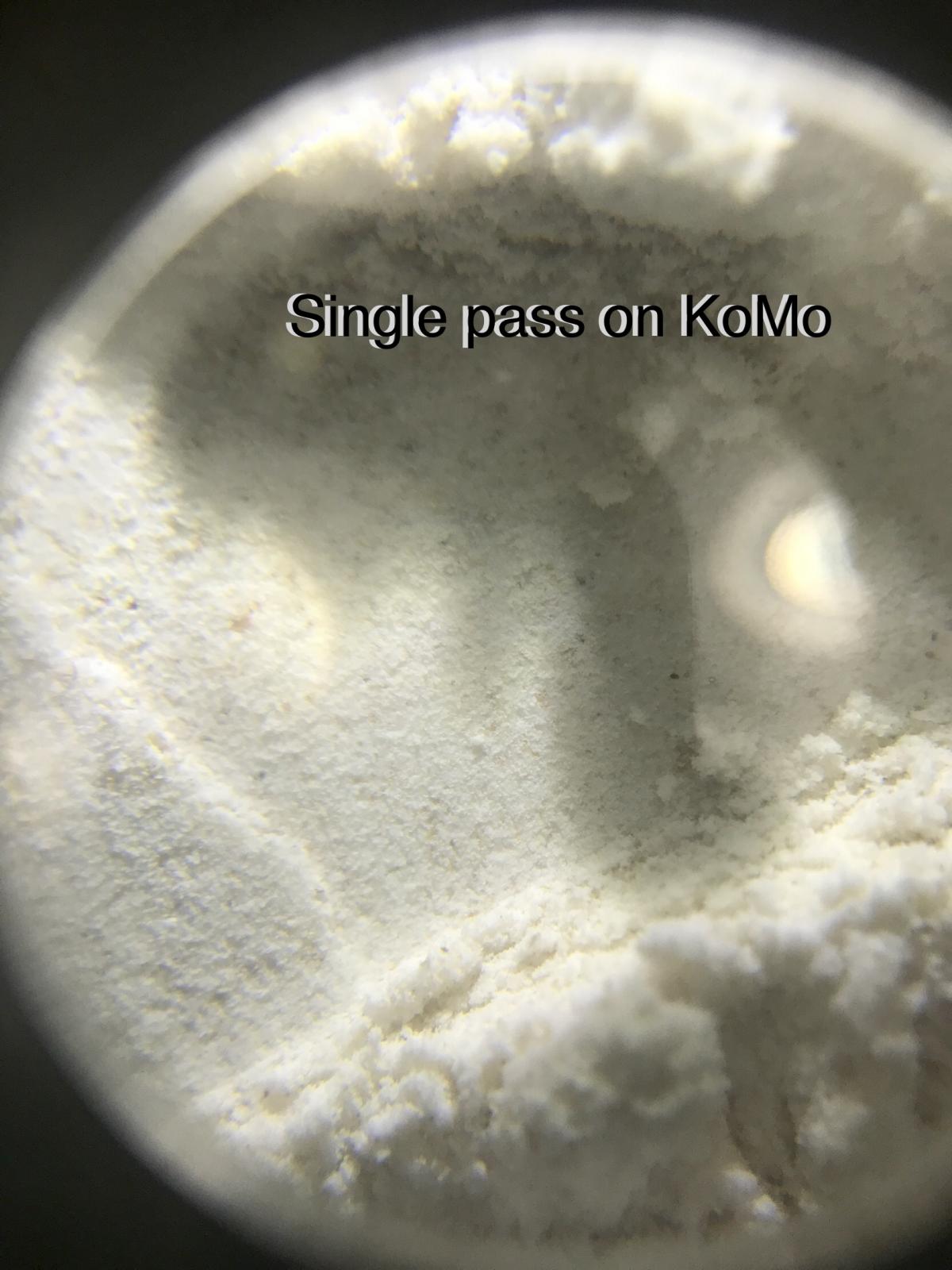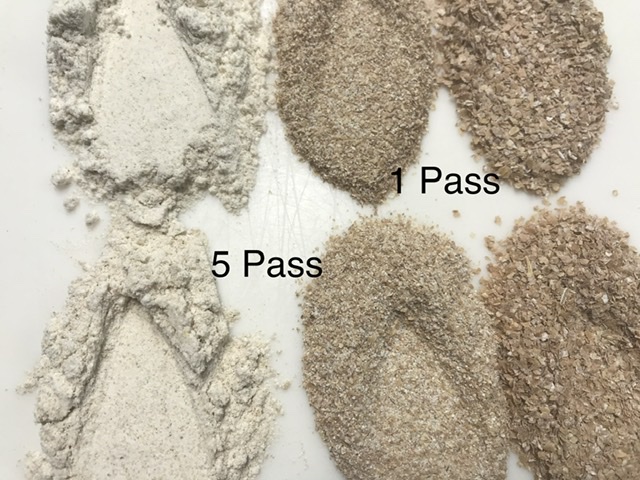
Tip - Home Made Grain - Sifter, Shaker
Here is a 3.5 minute video showing how a heavy duty massager can do a great job of sifting milled grain. It sure saves me a lot of hard work.
For best viewing us THIS LINK.
Here are a few images of the flour, middlings, and bran of both a single pass and 5 pass millings.


After quite a bit of use the following works best for me. Set your stones a few (3 or 4) clicks from kissing and make your first grind. The coarser first grind is to lessen the amount of starch damage. After sifting the first pass, set your stones to ‘just kissing’ and mill the parts that didn’t fall through one or both of the screens. This method will also reduce some of the heat generated during milling.
The 5 pass test greatly damaged the starch. The resulting dough was a sloppy mess.
I think a single, at most double pass through the mill is sufficient for excellent results.
Dan
Update : concerning starch damage. The following was extracted from THIS ARTICLE.
” What is starch damage?
The milling of wheat causes physical damage to a proportion of the starch granules of the flour. The level of starch damage directly affects water absorption and dough mixing properties of the flour. Damaged starches hydrate quickly and provide fermentable sugars for yeast. Native starch is usually 82-85% of the flour while damaged starch is 15-18%. Native starch fixes 0.4x its own weight in water while damaged starch fixes 4x. When there is too much damaged starch in the flour (and thus the dough), when you bake, the starch gelatinizes earlier and the volume is less when baking. Gelatinized starch “sets” at a lower temp. High hydration, increase maillard reaction, and small loaf volume indicate too much damaged starch can include.”
In my experience too much starch damage will destroy a bread dough.


That’s a very clever, deft and effective use of your massager Danny. Bravo!
If you plan to make a habit of this practice, I would again suggest covering your top classifier with a dispo shower cap to prevent flour dust from coating 1) surrounding surfaces and, perhaps more importantly, 2) the inner surfaces of your lungs.
I have read here and elsewhere of bakers developing pulmonary problems from airborne flour. And that system you’ve got going probably sends up plenty. And/or get serious and wear a mask.
Tom
Great caution, Tom! I meant to try a plastic hair net to see if it would be large enough to cover the top sieve.
I think 5 passes is overkill. But the single pass got a considerably larger percentage of middlings. I'd venture a guess and say 2 pass would be efficient and any more, unnecessary. Less is best...
This works good for the small amounts I use. Finding an 8 inch tami is a bit of a challenge though. I make one pass with the stones ticking in Mockmill 100 and I sift though a 40 mesh that removes about 5% of the brown bits. I like to think I am oxygenating the flour at the same time.
The clear plastic shower caps that I use for bannetons are too small to cover the 13.5 in opening of the classifiers.
Anyone got any ideas? It should be see through in order to know when the bran has been throughly sifted.
Plexiglass would work, but I am hoping for a more graceful and simple solution. The cover is good for health reasons and great for controlling flour throughout the kitchen. I was planning to take the operation outdoors.
Dan
Very nice. Just wondering if anyone thinks this would work well? Cheaper than the Morfam Jeannie Rubs, but then I don't know if it would work well. Thanks.
Gadjo, at one time I considered buying an electric shaker to sift my flours. But with the help of Dario, aka dsb66 I have streamlined the sifting process and no longer need anything else.
I stack a 30 mesh on top of a 50. It is only a matter of minutes to complete the sifting. Here is the link to the screens I use and like very much. Cheap, fast, and nothing to store.
Hey Dan,
Thanks. Yep, on his suggestion, I got the two as well and absolutely love them (not sure how well I'm sifting through - #50, I get 98%, #50, 87%, which is great for me for a high-extraction flour. My thanks out to Dario as well.
I'm just pretty messed up neurologically and even the minor effort involved in sifting a kg or so through causes a severe pain flareup, pretty debilitating, so was hoping to find a way to ease it a bit, if possible. I was very impressed with your solution!
In that case I think the vibrator will make the process a lot easier on you. If the vibrator is of decent quality it should work for you.
Do you have a vibrating sander by any chance? An electric motor with an out of balance pulley, etc.. You could attach any thing that vibrates to a piece of plywood and set the bowl and screens on top.
Good luck with that!
Thanks Dan. No, I'm afraid I'm tool deficient since selling most of my stuff as I no longer use them. At $29, shipped, so long as it works seems like a good solution.
Thanks for the idea!
I was sifting ~800g of home milled flour today and I must say, the vibrator was nice! very easy and super efficient...
Nice Idea.
Have you tried grinding the separated bran finer? Is this possible?
I have found that it is very difficult to greatly reduce the bran size by regrinding. No matter what I’ve tried, it has never been fine enough. I think the hull (bran) is not brittle enough.
My goal was to make the bran particles very fine. Even a mortar and pestle didn’t work.
Update - Michael Wilson contacted me and told me that the ””hull and bran are the same”. Sorry that's not right. The hull also know as the chaff is the outer husk that contains the grain and is inedible.”
The particles that I falsely described as the hull is larger paper-like, but much thinner. I think it is too soft (not brittle) and that is why It is difficult to reduce their size to fine.
The image below illustrates the result of a single pass with stones kissing (top) and 5 individual passes. The first with the stones slightly separated and with each additional pass the stones were closed until on the last pass they slightly kissed.

Enlarge the pile of bran on the bottom right.
The link dealing with the image above may be seen HERE. Scroll down to pickup the conversation.